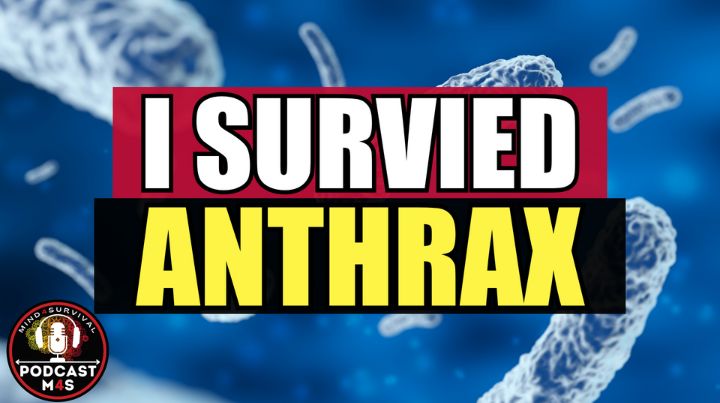Anthrax Poison and Assassins: My KGB Survival Story

When Dr. Nina Cerfolio volunteered for a medical mission in Chechnya during the Second Chechen War, she expected challenges, but nothing prepared her to confront the KGB and anthrax poison. Her ordeal began with an encounter with a man presented as a sports journalist who was actually a KGB agent. Unfortunately, this encounter with a KGB assassin marked the start of a traumatic journey that would test her limits both physically and mentally.
Encounter in Chechnya
In 2005, Dr. Cerfolio's journey to Chechnya was driven by a deep-seated commitment to alleviate the suffering wrought by war. Her extensive involvement in humanitarian efforts, including service as a 9-11 first responder, leading disabled athletes in marathons, and guiding a blind climber up Mount Kilimanjaro, underscored her dedication to empowering the most vulnerable. Upon arriving in Chechnya, she worked to start a running club for children, many of whom bore the scars of war, from lost limbs to other unimaginable traumas.
The mission's noble intent, however, was overshadowed by betrayal. The man she believed to be a fellow humanitarian was, in fact, a KGB agent with motives far removed from her philanthropic mission. His mission was to stop the relief effort that Dr. Cerfolio was trying so hard to achieve. As such, his actions, ranging from stealing funds to sabotaging their efforts, highlighted the unseen dangers of what she was doing.
The Onset of Symptoms
Following her poisoning, Dr. Cerfolio began experiencing severe, flu-like symptoms, escalating rapidly into a condition that left her bedridden with a high fever. This sudden illness stands in stark contrast with her usual elite athlete state of health and accustomed to the long and demanding physical challenges. The severity of her symptoms, including projectile vomiting of blood and debilitating fatigue, underscored the seriousness of her condition. Her once robust health was now compromised, pushing her into a relentless and ongoing battle for survival.
General Symptoms of Anthrax Poisoning
The general symptoms of anthrax vary depending on the type of infection: cutaneous, inhalation, gastrointestinal, or injection anthrax. Symptoms can range from skin sores with black centers for cutaneous anthrax to severe respiratory issues for inhalation anthrax. Gastrointestinal anthrax can cause symptoms like bloody vomiting and severe diarrhea, while injection anthrax symptoms are similar to cutaneous but can spread faster and be more severe. (Source)
An Elusive Diagnosis
Dr. Cerfolio's path to understanding her condition was filled with difficulty and dead ends. Unfortunately for her, the medical community was stumped, with even specialists unable to pinpoint the cause. The nature of anthrax poisoning, especially the kind engineered by state actors like the FSB, made it a very effective and relatively untraceable weapon. It wasn't until she explored non-traditional treatments and diagnostics, including high-dose detoxes with essential oils like Thieves and testing with a Rife machine that the presence of man-made anthrax in her system was confirmed.
How Anthrax is Typically Diagnosed
Medical professional is typically diagnos anthrax poisoning through various tests and examinations, depending on the suspected type of exposure and symptoms. Initially, doctors will evaluate the patient's work, exposure risks, and symptoms to rule out other conditions like the flu or pneumonia. If doctors suspect anthrax poisoning, specific tests can be conducted:
- Skin Testing: For cutaneous anthrax, a sample from a suspicious skin lesion or a biopsy may be tested in a lab.
- Blood Tests: A small blood sample is checked for anthrax bacteria.
- Imaging: Chest X-rays or CT scans might be used to diagnose inhalation anthrax by looking for characteristic signs in the lungs.
- Stool Testing: This is used to diagnose gastrointestinal anthrax by checking for anthrax bacteria in a stool sample.
- Spinal Tap (Lumbar Puncture): This is recommended for systemic anthrax suspicions (other than cutaneous) due to the risk of meningitis.
The Long Road to Recovery
Recovery was neither straightforward nor easy. The poisoning left Dr. Cerfolio in a transitional state, teetering on the brink between life and death for years. It took an immense toll on her, physically manifesting in chronic conditions and multiple food allergies that she had never experienced before. The journey was not just about battling the physical aftermath but also about navigating the psychological landscape of vulnerability and acceptance.
The Mayo Clinic On Treating Anthrax
According to the Mayo Clinic, the standard treatment for anthrax includes antibiotics and sometimes antitoxin, depending on various factors, such as the number of people needing treatment, the strain of anthrax, and the patient's age and overall health. Treatment is most effective when started as soon as possible.
Since the 2001 anthrax attacks in the United States, antitoxin therapies such as raxibacumab and obiltoxaximab have been developed for inhalation anthrax. These therapies work by neutralizing the toxins the infection produces rather than targeting the bacteria directly. Anthrax immunoglobulin can be helpful for this purpose.
In some cases, surgical removal of infected tissue has been successful in treating injection anthrax. Advanced cases of inhalation anthrax may require intensive supportive care, including the use of ventilators and medications to manage blood pressure. (Source )
Embracing Vulnerability and Change
The ordeal, while disturbing, brought unexpected gifts. It forced Dr. Cerfolio to slow down and embrace her vulnerabilities, leading to a profound transformation in how she approached her work and relationships with others. She shifted towards a more holistic and spiritual approach in her psychiatric practice, fostering deeper connections and aiding her patients in overcoming impasses that had previously seemed impossible.
The Bottom Line on Dr. Nina's Anthrax Poisoning
Dr. Cerfolio's story serves as a stark reminder of our world's unexpected dangers and nature. They also highlight the unfortunate truth that bad people lurk in the shadows of the most noble pursuits. Her survival and subsequent transformation underscore the resilience of the human spirit and the capacity for growth in the face of adversity. The narrative of Dr. Nina's story sheds light on the personal cost of such encounters and celebrates the strength and adaptability inherent in us all.
What are your thoughts on Dr. Nina's story? Have you ever had a poisoning experience? Share your thoughts in the comments below.
Additional Resources:
Stay safe,

Related Articles
FREE Guide
Read the Best Seller
Join Mind4Survival
Stay informed by joining the Mind4Survival! 100% Secure! 0% Spam!
Affiliate Disclosure...
Mind4Survival is a free, reader-supported information resource. If you make a purchase through our link, we may, at no cost to you, receive an affiliate commission.
Do You Want To Be Ready No Matter What?

Download our free 39-page guide with interactive, 7-Day Emergency Kit Checklist and take the first step toward real preparedness.
- Know exactly where to start.
- Save time and money.
- How-to build a complete Basic Emergency Kit.
- Level up your safety and security.
Join Mind4Survival
Stay informed by joining the Mind4Survival! 100% Secure! 0% Spam!





